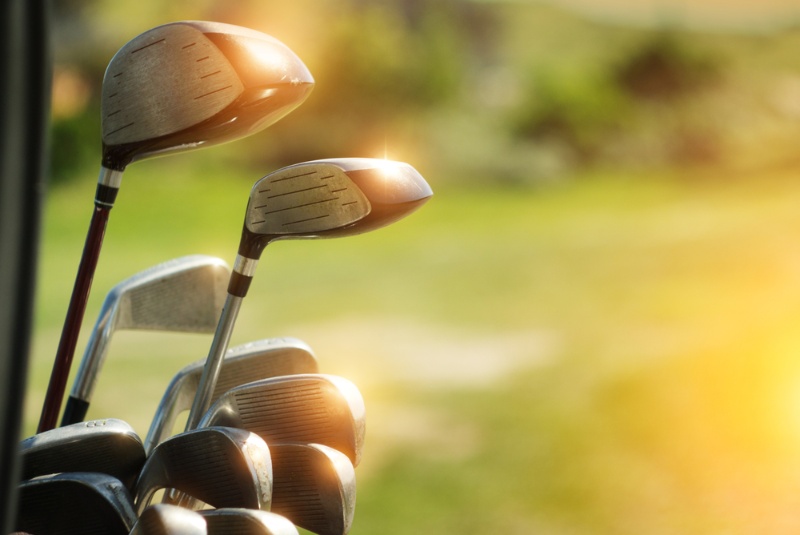Assessing Your Game and Needs
Before diving into the vast array of golf club options, take a moment to evaluate your current game and what you need to improve. Are you looking to gain more distance on your drives, improve your accuracy with irons, or enhance your performance on the green? Your skill level—beginner, intermediate, or advanced—will also significantly influence the types of clubs that best suit your game. Beginners might benefit from clubs designed for easier playability and forgiveness, while more experienced golfers might look for clubs that offer greater precision and customization. Reflecting on your playing style and objectives will help tailor your search for the perfect set of clubs to your specific needs, ensuring that your next set enhances your game.
Understanding Club Types and Their Purposes
A standard golf club set includes drivers, woods, irons, wedges, and a putter, each designed for specific situations on the course. Drivers are used for long-distance tee shots, woods for fairway shots, irons for a variety of shots from tee to green depending on the distance, wedges for short-distance shots requiring precision, and putters for the green. Additionally, hybrids combine the features of woods and irons, offering versatility and ease of use, especially beneficial for those struggling with long irons. Familiarizing yourself with each club type and its intended use provides a foundation for selecting a set that covers a wide range of shots and scenarios you'll encounter on the course.
Importance of Club Fitting
A custom club fitting is an invaluable step in selecting your next set of golf clubs. This process involves measuring your swing speed, hand size, height, and other physical and playing characteristics to tailor clubs to your specific needs. Custom-fitted clubs can improve your accuracy, distance, and overall comfort, which can significantly enhance your game. Many golf retailers and pro shops offer fitting services, utilizing advanced technology to analyze your swing and recommend the best clubs for your style and abilities. Investing time in a professional fitting session ensures that your new clubs will complement your swing mechanics and playing style, providing an immediate improvement in your game.
Choosing the Right Shaft
The shaft is often referred to as the "engine" of the golf club because it plays a crucial role in the club's performance. Shafts vary in material (steel or graphite), weight, length, and flexibility (flex). Graphite shafts are lighter and can help increase swing speed, making them a popular choice for drivers and woods, especially among players with slower swing speeds. Steel shafts, being heavier and more durable, offer greater precision and are commonly used in irons. The shaft's flex—ranging from extra stiff to ladies'—should match your swing speed to optimize the club's performance. Selecting the correct shaft can dramatically affect your comfort, swing, and, consequently, your scores.

Iron Selection: Cavity Back vs. Blade
Iron sets typically vary between cavity back and blade designs, each offering distinct advantages depending on your skill level. Cavity back irons are designed with a hollowed-out rear club head, distributing weight around the perimeter. This design maximizes forgiveness on off-center hits, making them ideal for beginners to intermediate players. Blade irons, or muscle-back irons, feature a full back on the club head and offer more control and precision, catering to the needs of more skilled players who can consistently strike the ball well. Understanding the difference between these two types and assessing your own skill level and preferences will help you choose the right irons for your game.
The Role of Wedges and Putters
Wedges are specialized irons used for short-distance shots, offering high precision and control around the greens. There are several types of wedges, including pitching wedges, sand wedges, gap wedges, and lob wedges, each designed for specific types of shots. Choosing the right mix of wedges for your bag can drastically improve your short game. Putters, while seemingly simple, come in various head shapes and sizes, alignment features, and lengths. The right putter should feel comfortable in your hands and instill confidence on the green. Spending time to select the correct wedges and putter can make a significant difference in lowering your scores.
Balancing Quality and Budget
While the allure of top-of-the-line golf clubs can be strong, it's essential to balance quality with your budget. The golf market offers a wide range of club sets at varying price points, including options for those new to the game to premium models for serious golfers. Consider purchasing used or previous year models of high-quality clubs, which can provide excellent value. Many manufacturers also offer mid-range clubs that incorporate much of the technology found in higher-end models without the steep price tag. Determine your budget ahead of time and stick to it, focusing on the clubs that will most improve your game within your financial means.
Research and Testing
Once you have a good understanding of what you're looking for, research and testing are crucial steps in the selection process. Read reviews, ask for recommendations from more experienced players, and most importantly, test various clubs yourself. Many golf shops offer demo days or simulators where you can try different clubs and see which ones feel best to you and improve your game. Taking the time to thoroughly research and test clubs will ensure you make an informed decision that you'll be happy with for many rounds to come.
Making Your Selection: A Game-Changing Decision
Armed with knowledge about your needs, the types of clubs available, the importance of a custom fitting, and the considerations for shafts, irons, wedges, and putters, you're ready to make an informed selection for your next set of golf clubs. Remember to balance quality with budget, and don't rush the decision. The right set of clubs can be a game-changer, providing not only improved performance on the course but also increased enjoyment of the game. By applying these smart strategies, you'll be well-equipped to choose a set of golf clubs that will serve you well as you strive to reach your golfing goals and enjoy many successful rounds in the future.
This guide serves as a comprehensive approach to selecting the perfect set of golf clubs tailored to your game and needs. By considering each aspect of the selection process, from understanding the basics of club types and their purposes to the significance of a proper fit and the importance of research and testing, you're well on your way to enhancing your golfing experience. The journey to selecting your next set of golf clubs is an opportunity to reflect on your game, make strategic decisions, and invest in your passion for golf, leading to greater satisfaction and potentially lower scores on the course.




